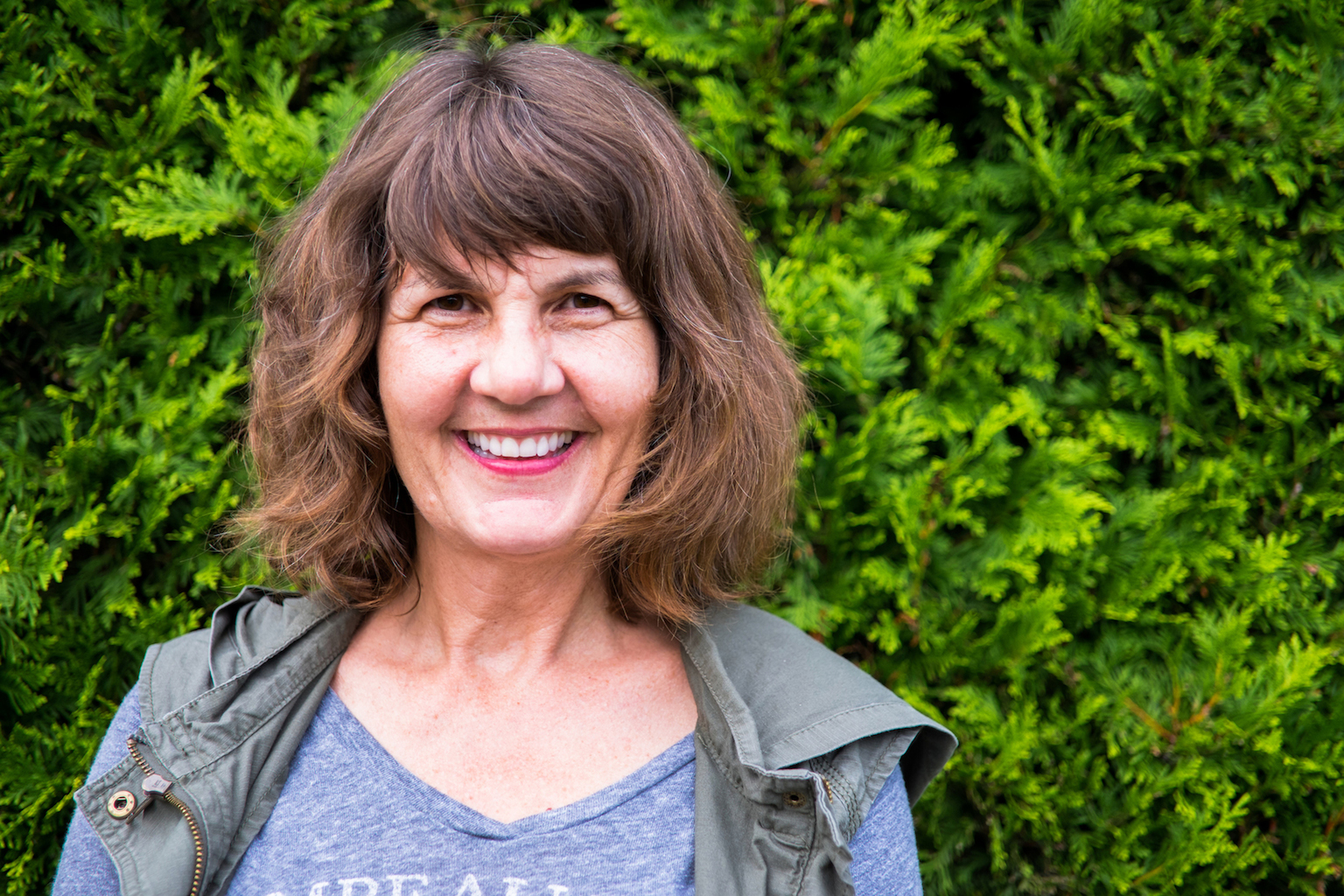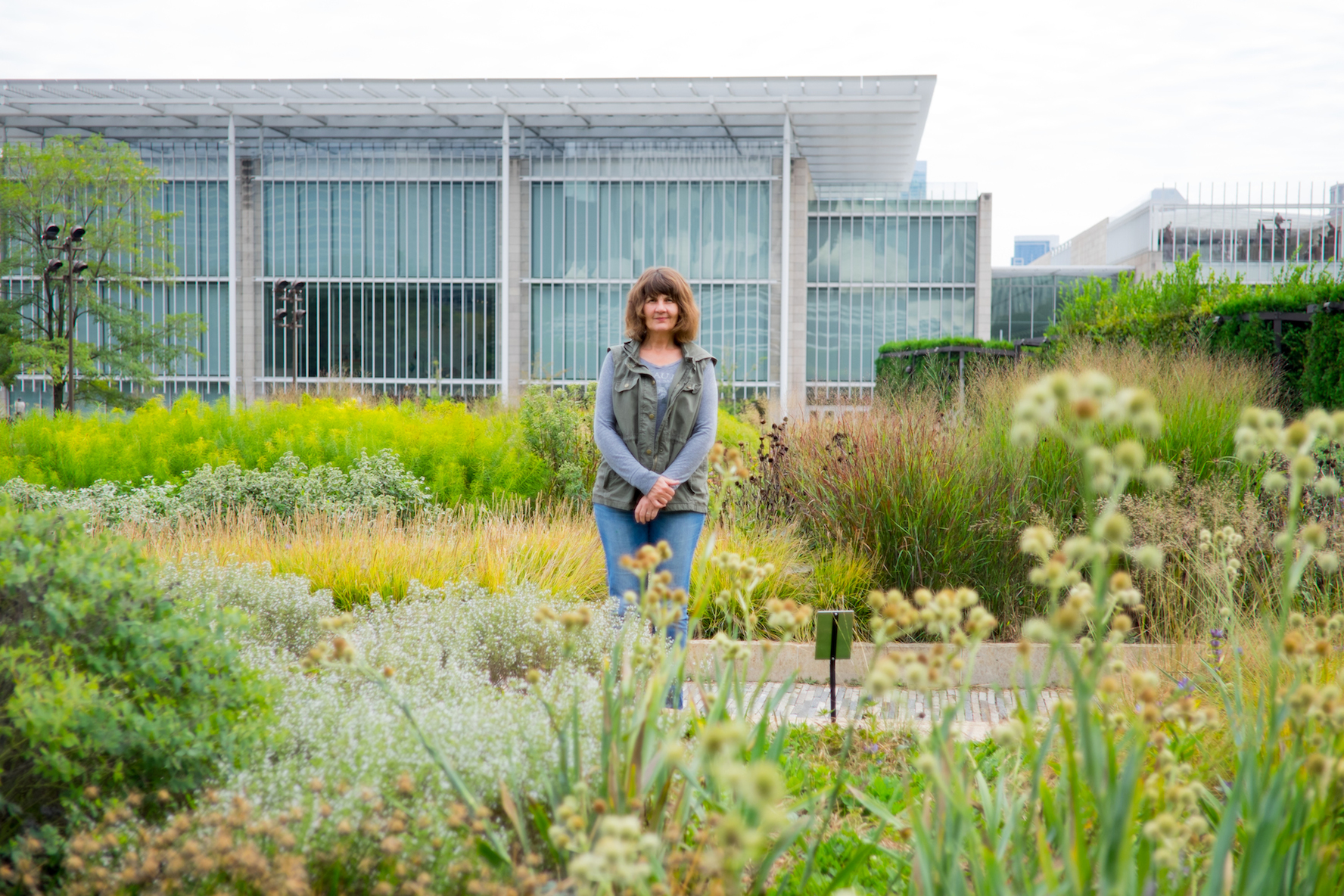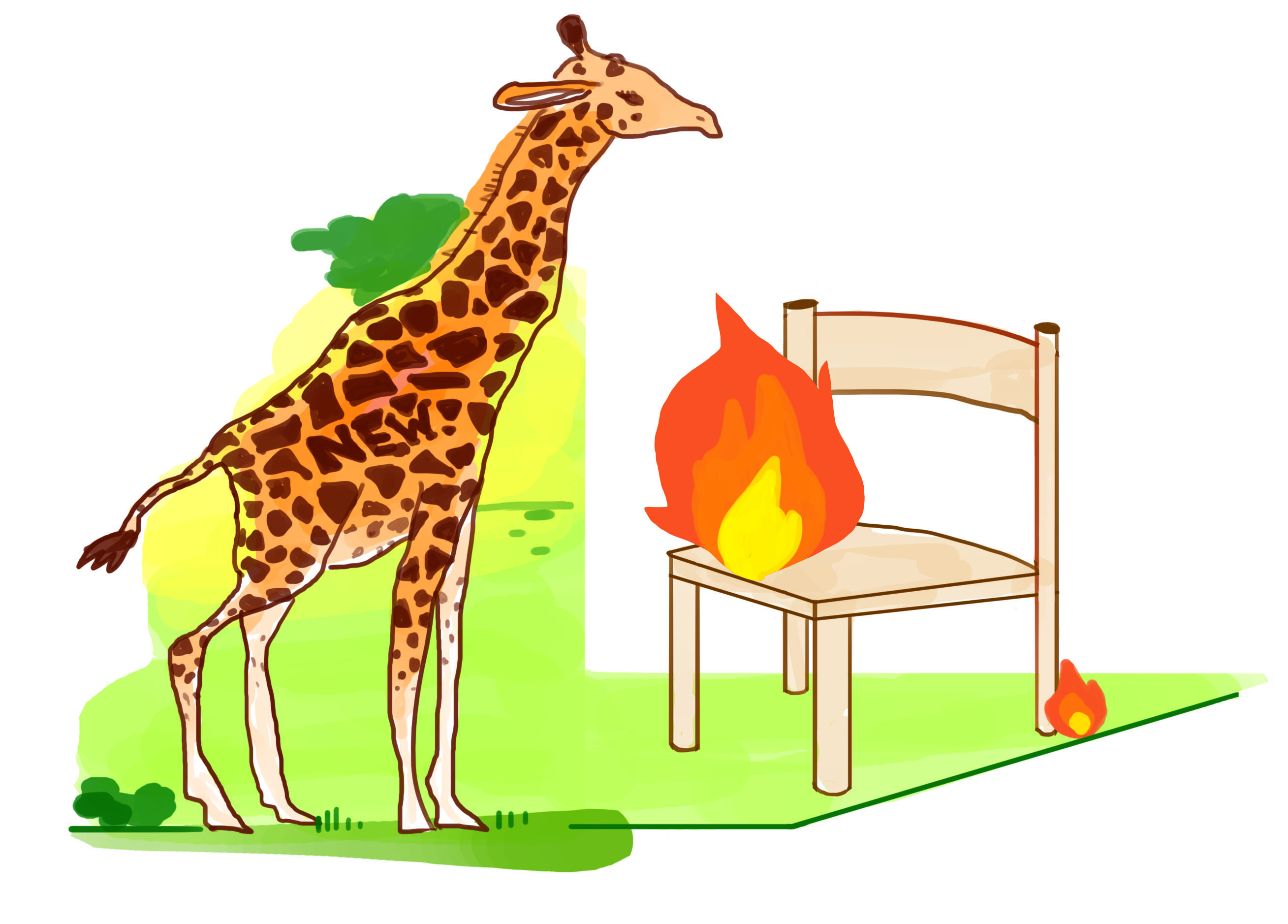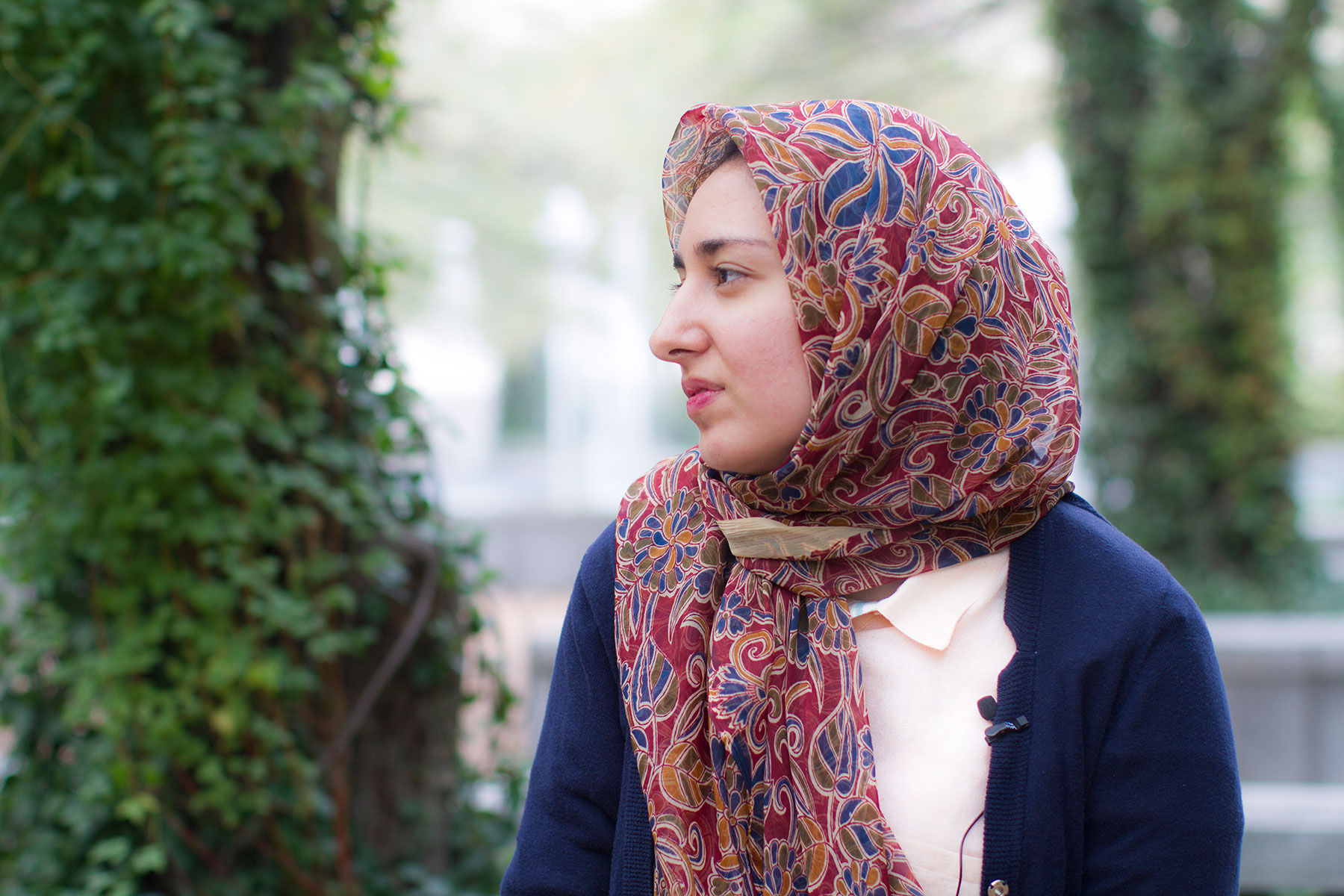“Portrait of the Artist as an Artist” is an interview series with the goal of showing that making a career as an artist is achievable and how. In the first installment of this ongoing project, F Newsmagazine sits down with the School of the Art Institute of Chicago’s (SAIC’s) own Michelle Grabner, an accomplished artist and a professor of Painting and Drawing.

Emily Mercedes Rich: As an introduction, can you tell us what do you do and why?
Michelle Grabner: I am the Crown Family Professor of Painting and Drawing at School of the Art Institute. I started teaching at the school in 1996 as a grad advisor and continued to this day. So that is an important base to thinking about all the work that I do. Everything else, whether it’s critical writing or showing an exhibition, I end up seeing those bodies of work as part of teaching. Then of course there’s studio practice which is very important to me, and sometimes it’s social where I’m collaborating, but often it is a very traditional practice where I go into the studio for long stretches of time and think about ideas such as repetition and time that are found in patterns that are very familiar to us, such as gingham.
EMR: Were you always drawn to teaching?
MG: Yes, I think so. Even as a precocious high school kid who would spend a lot of time in the arts area, taking a lot of art classes when I could, [I understood] teaching as a way of being an artist in the world, that was always one piece to me. I grew up in northern Wisconsin [where] we didn’t even understand what an art career could be or that there was a possibility of making a livelihood based on art-making alone, so teaching was always there. I never thought I wouldn’t teach.
EMR: Teaching is often viewed by young artists as a backup plan or a pay-the-rent plan. Was it that for you or was it something you always wanted to do in addition to making art?
MG: No, I think there’s something very virtuous about teaching, whether that’s teaching a bunch of middle-school kids or teaching graduate students to think about theory. I think it’s an admirable profession; we just happen to be living in a current situation where teaching is not valued the way it was at a certain point in time. I think it would be a very dreadful condition if one had to rely on vagaries of the marketplace to sustain a living or to sustain a studio practice, so to be able to have a steady relationship to work, to time, to income, and let your practice work within that and let it evolve freely because your rent is taken care of, your supplies are taken care of. Teaching is very freeing, to have a relationship to a job, to money, to time is very freeing on the studio practice.
EMR: You mentioned the business side of art, how do you navigate that?
MG: I navigate it as a reality. The commercial art world is a real force within contemporary art. I also understand that the commercial art world is built on a world economy, and as the world fluctuates, so will the economics of the art world. So take advantage of it when it is doing well but [don’t] make everything you do contingent on it, acknowledge it and [don’t] trust it’s a stable situation.
EMR: In the past twenty years, you’ve shown your work in over 60 solo exhibitions and well over 100 group exhibitions. To what do you attribute that success?
MG: Thanks for counting! I didn’t know that! That’s kind of horrifying! It’s another cliche, but basically it’s hard work. I work very hard, and I also love work. I think that really helps. I do enjoy working. I enjoy people. I enjoy art. That’s a constant negotiation within the art world. I also try to say yes, even if it’s a dubious exhibition or I don’t know the people in it, I still will try to say yes. It’s those kinds of situations where I can learn from others in terms of my ideas. I will get feedback that I never thought I would get. So by showing one’s self, one’s writing, one’s work through exhibition or curating in different contexts, one really comes to understand the breadth of the world you’re working in.

EMR: You also co-direct at THE SUBURBAN and The Poor Farm. Can you tell us a little about those spaces, what drew you to them, and what continues to draw you to them?
MG: They’re spaces that my husband and I decided to embrace, to take on, to create a platform for other artists, so you know we’re conventional in one way where we have three kids, we have mortgages and so forth. That comes with some limitations and there’s a pretty great, active art world swimming around us. That’s something we can’t keep our eyes off of, so how do you get these artists from all over the world to come to you? You offer them exhibition spaces and possibilities for projects, and try to find resources to get them there. Often it’s out of pocket, so we can have this interaction with artists and spend time with them and figure out how they think. What are their methods? How do they make work? How are they handling this very specific condition of a gallery space that’s in rural Wisconsin [or] in Milwaukee? It’s a little selfish, but it also helps us get a greater understanding of the vastness of methods of work and artists and their ideas. As an artist, one always has to be reminded of that. Working and interacting with other artists and their ideas allows me to be more myself in the studio, more refined in terms of my own ideas.
EMR: Did you always perceive a need to provide space for other artists and to observe their practice in that way?
MG: Yeah, I think so. It’s a professional strategy to open up a space. And let me tell you the last thing you want to do is open up a space and think that it’s going to come back and increase the visibility of your work or create a way for you to enter the world. That is not the case at all. You really have to like working with artists. Artists have all kinds of needs. No artist that you work with is the same. Every time you invite somebody in and you’re working with them, even on a monthly basis, you’re in for a whole new experience. So you really have to love the diversity, the multiplicity of people in the world. You have to love people. All in all, the short answer to that is when I have the opportunity to give back, to offer a different kind of context for artists to work in, that gives me great pleasure, and it is a responsibility.
EMR: If you could have asked an artist any question when you were in college or just starting out, what would it have been?
MG: Why art-making and not the law? That’s it. Why art-making and not the law?
EMR: How would you answer that question today? Why art-making and not the law?
MG: I can’t. That’s what is so compelling about being an artist and somebody who’s engaged in culture. One has to pull back and see the complexity of the world we live in. One has to always be responsible for the freedoms one has been able to pull out, and what one does with those freedoms that we have. And to this day, I can wake up and read the news and have to really puzzle over what it means and where the value is, or the politics, of going to the studio today as opposed to going to Sherman Park in Milwaukee and protesting. Asking those questions all the time, it never gets easier, nor should it; it should always be a difficult question of what one does with one’s responsibility.
EMR: The function of this series is to show that working as an artist is an achievable goal; your resume is almost evidence enough, but if you were to provide another piece of evidence for our readers, what would it be?
MG: I think it’s important to realize that you could be a very successful artist within the conventions of ordinary life, that it’s not exclusive, that one doesn’t have to carve out and understand a place of being an artist that is wholly unique to the world we live in. I knew very early on that I wanted to have a conventional lifestyle with kids and a dog and a mortgage, but also wanting to engage with issues of culture actively and be able to think about how those things fit into or push at the life I chose to have. That’s super compelling to me. That made it easy. It’s often very difficult if we work against our human nature; we each carry a kind of human nature with us, and if we work against that, if we want to obtain something outside of that, it’s very very difficult and you’re always fighting your instinctual being. It’s important to understand who one is. Even if one has these very, very almost prosaic desires to be a mother in the world, it doesn’t at all prevent you from having an influence in terms of shaping a world outside of that. Sometimes limitations really help clarify and push you forward.
EMR: I also have a couple of rapid fire questions for you.
MG: Ok.
EMR: What did you have for breakfast?
MG: I had peanut butter toast and coffee.
EMR: Who is your favorite artist?
MG: Herbert Brandl, he’s an Austrian painter.
EMR: Do you watch TV? What’s your favorite show?
MG: Oh, I do. I have so many favorite shows, but right now I’m plowing through a series called “Life.”
EMR: Where’s your favorite spot in Chicago?
MG: I have a very specific favorite spot. There’s a bench in the Lurie Garden that I love. I can see the entire Renzo Piano building, but also a pretty extraordinary collection of indigenous plant life.
EMR: Where can we find your work?
MG: You’d find it in my studio in Milwaukee and my studio in northern Wisconsin. That’s a different kind of circulation.







